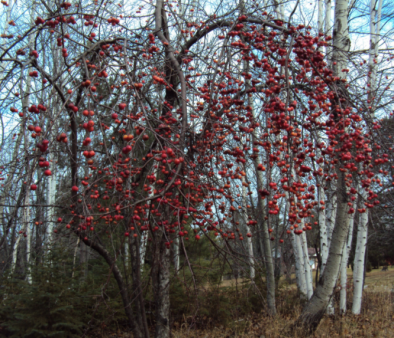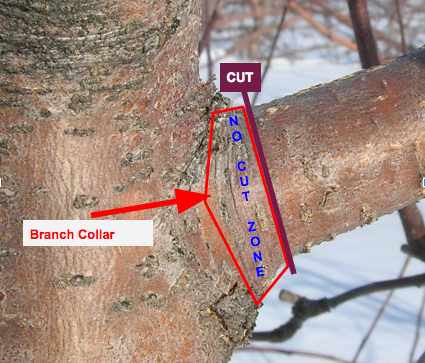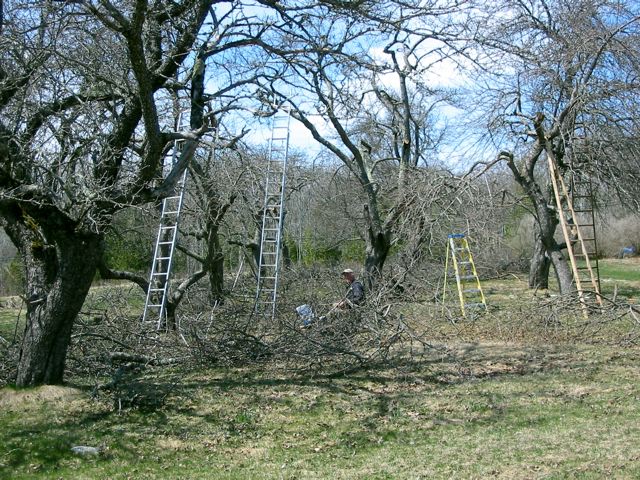Pruning That Apple Tree
Left to its own devices in nature, an apple tree will form into a multi-stemmed thicket, an unorganized, unlovely tangle. From the tree’s point of view this is just fine. It doesn’t care if it produces thousands of tiny apples instead of hundreds of large ones. It doesn’t care if the fruit gets shaded and doesn’t color up. The only thing the tree cares about is its biological imperative, its singular goal in life, to produce viable seeds.We, on the other hand, aren’t so interested in the seeds. We have other goals for our apple trees. We want fruit and we want beautiful looking trees as part of our landscape. So prune we must. How and when?

First of all, the tree should be approachable. If the lower branches are dragging on the ground and form a fence around the tree then they should be cut off or thinned. What good is an apple tree if you can’t even get close to it? There should be an established route up into the tree for picking and pruning and for children and other tree climbers. Secondly, all dead wood should be removed. Then its time to step back and take a good look at the tree and think about balance. Is the tree leaning? Could the center of gravity be brought back over the trunk by pruning out a few limbs? This is a crucially important step for young trees. Keep the tree upright by pruning.
Apple trees are generally trained to a central leader when they are young. Then when they are 8 or 10 feet tall the leader is allowed to whorl and the tree is encouraged to grow horizontally rather than vertically, broad rather than tall. If you have an older apple tree these decisions have already been made for you and, for better or worse, the framework of the tree has already been established. Regardless of how old the tree is there are some rules of thumb for pruning. Prune out any new growth that is either vertical or heading back in towards the middle of the tree. Direct all new growth out horizontally. Let the lowest branches extend out the furthest, with each succeeding layer of branches stepped in so that they aren’t shading the lower branches. Prune out any crisscrossing branches. Make sure all branches have space around them, that they are not competing for sun and air with their neighbors. The effect you want is a tree which is mostly clear in the middle with an even density of foliage towards the outside perimeter. The old adage goes that an apple tree is well pruned when a bird can fly through it. A healthy mature tree can be pruned quite heavily with no ill effects although you should attempt to remove no more than a third of the foliage in any given year.
No discussion of pruning would be complete without mentioning the importance of leaving the branch collar intact when removing a branch. The branch collar is the slight flare where a branch meets the trunk. Make your cut, not flush, but slightly outboard of the trunk and the wound can heal completely over in one season. Painting the wound with tree paint is an archaic practice that is no longer recommended.

When is the best time to prune? Prune when the tree is still dormant but the most severe cold weather has passed. Late February to early April is ideal.
